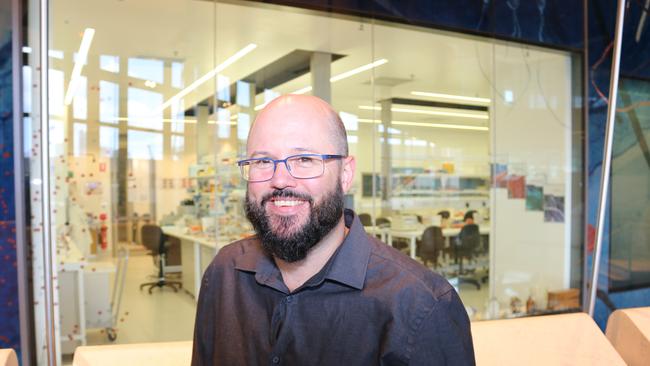Qld-led study could pave way for new melanoma therapies after uncovering new genetic clues
Scientists from the QIMR Berghofer Medical Research Institute have played a lead role in a melanoma study which has more than doubled the number of genetic regions linked to the skin cancer.

QLD News
Don't miss out on the headlines from QLD News. Followed categories will be added to My News.
QUEENSLAND researchers have played a lead role in an international study which has more than doubled the number of genetic regions linked to melanoma, a skin cancer which kills more than 1700 Australians a year.
Statistical geneticist Matthew Law, from QIMR Berghofer Medical Research Institute, said the study identified 33 new genetic regions associated with melanoma, on top of the 21 already known to influence the risk of developing the skin cancer.
FINDINGS FROM WORLD’S BIGGEST BREAST CANCER GENETIC RISK ANALYSIS
QLD BABY WITH EXTREMELY RARE DISORDERS TRIALS EXPERIMENTAL DRUG

The research, published in the prestigious science journal, Nature Genetics, provides new hope that by better understanding the biological basis of the disease, treatments can be improved.
“By finding new regions, we can narrow in on the specific underlying genes and better understand the pathways that lead to melanoma,” Associate Professor Law said.
“If you can find the genes that are involved in a disease, you can then see if there are drugs that might modify those genes and then if those drugs influence, or help, manage the disease. That’s the aim.”
Scientists analysed DNA from 37,000 people diagnosed with melanoma and compared their genetic information to that of nearly 400,000 people with no history of the disease.
Professor Law said he was particularly excited about the discovery that two genetic regions previously linked to auto-immune disorders were also involved in melanoma risk.
“We know broadly that the immune system is important to cancer and melanoma,” he said. “Your immune system tends to deal with cancer most of the time and sometimes, the cancer gets away from it so finding genes involved in the immune system is exciting from that point of view.”
The scientists also found an association between melanoma and common variants in a DNA repair gene TP53, known to be involved in cancer suppression.
Professor Law said that not unexpectedly, the study found genetic regions linked to melanoma that were also involved in sunburning and tanning.
“With melanoma, we know that sun exposure is important, that sunburn is bad for us,” he said. “As you might expect, a lot of the genes that we’re finding builds on these really core things we already knew.”
Melanoma begins in melanocytes, cells in the skin responsible for making the pigment melanin that gives colour to the skin.
Melanin is able to block some of the harmful effects of ultraviolet radiation, but the protection is not complete, which is why people with pale skin are at a higher risk of skin cancer.
Moles also develop from melanocytes, and having a high number of moles is a risk factor for melanoma.
Professor Law said some of the genetic regions related to melanoma that were identified in the study also appeared to be involved in the number of moles that developed on a person’s skin.
QIMR Berghofer scientists co-led the research with the University of Leeds in the UK, and the National Cancer Institute in the US.
Queenslanders with or without skin cancer are invited to take part in QIMR Berghofer’s ongoing QSkin genetics study by emailing QSkin@qimrberghofer.edu.au or phoning 1800 222 600.


